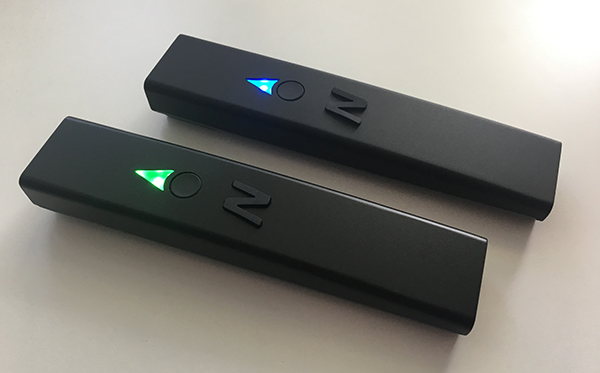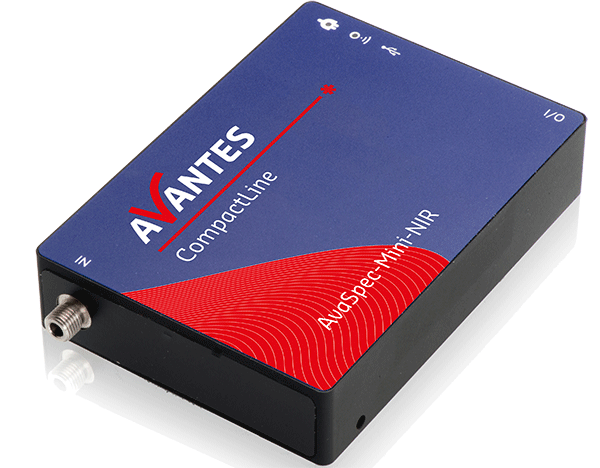|
Wednesday, August 5, 2020 |
|

|
|
|

|
August 2020
Spectroscopy Tech Pulse is a special edition newsletter from Photonics Media covering key developments in spectroscopy technology. Manage your Photonics Media membership at Photonics.com/subscribe.
|
|
|
Remote Sensing Puts Focus on Climate Change
As temperatures and carbon dioxide concentrations rise to levels not previously recorded, shifts in weather and other environmental changes are impacting the global landscape. Optical technologies such as remote sensing can not only gauge the extent of problems, but can also help target solutions.
|
|
|
|
|
|
Photonic Crystal Generates VUV Light at Wavelengths Suitable for Spectroscopy
Researchers at the University of Tokyo have created a tabletop device that efficiently generates circularly polarized vacuum ultraviolet (VUV) light using an ultrathin film with nanoscale perforations. VUV wavelengths, which can be absorbed by air but can pass through a vacuum, are useful for chemical and physical analyses, especially VUV wavelengths in the region of around 120 to 200 nm.
|
|
|
|
|
|
Optical Materials Bending the Rules, Shaping Our World
From the emergence of diverse 2D materials (perovskites for efficient solar cells) and twisted bilayer graphene (superconductive at a “magic angle”) to the boom in polymer science and the promise of quantum photonics, materials science is rapidly evolving.
|
|
|
|
|
|
|
sponsor
|

|
|
 BreezeTM – The Smartest Palm Spectrometer
BreezeTM – The Smartest Palm Spectrometer
BaySpec Inc.
BaySpec extended the wavelength range of Breeze™. The world’s first smartest palm spectrometer for 400-1700 nm with a simple one button operation was recently upgraded to reach the long end of 2500 nm featured in the Short-Wave Infrared (SWIR) range. BaySpec is announcing the availability of Breeze™, which enables the device to operate at 1300 nm-2500nm. Request Info Visit Website
|
|
|
 New: The AvaSpec-Mini-NIR Spectrometer
New: The AvaSpec-Mini-NIR Spectrometer
Avantes BV
The latest addition to our compact line: the AvaSpec-Mini-NIR! This compact, versatile near-infrared spectrometer is suitable for many different applications, including but not limited to food analysis and recycling. Though not as sensitive as our bigger NIR spectrometers, the loss in sensitivity is greatly compensated by its size and robustness, which makes this spectrometer extremely suitable for handheld applications. Request Info Visit Website
|
|
|
|
|
|
Introduction to Photodetectors - Hamamatsu Corporation
Photodetectors—such as photodiodes (PDs), avalanche photodiodes (APDs), photomultiplier tubes (PMTs), and silicon photomultipliers (SiPMs)—are essential components in a vast array of modern scientific and commercial instruments and devices; technological progress will make them even more ubiquitous. Part 2 of this two-part webinar discusses the following topics: photodetectors’ structures and operation, their applications, and the selection of a photodetector.
|
|
|
|
Room-Temperature Terahertz Quantum Cascade Lasers
The terahertz (THz) spectral range between the infrared and microwave has long been recognized as an unexploited range of frequency bands. It has considerable potential for application in numerous fields, including communications, imaging, spectroscopy, and biological engineering since the THz wave can pass through nonconducting materials such as many dielectric materials, semiconductors, and medicines.
|
|
|
|
|
|
Scientists Apply Raman Spectroscopy to COVID-19 Testing
A Northern Arizona University research team, led by professor Miguel José Yacamán, is developing a new test technology for SARS-CoV-2 using single-molecule surface-enhanced Raman spectroscopy (SM-SERS). The researchers are applying concepts from the fields of nanotechnology, plasmonics, and 2D materials to their development process.
|
|
|
|
|
|
Molecular Qualities Captured with Plasmons
Specific properties of small amounts of molecules can now be isolated with the use of graphene-metal film structures, thanks to the work of scientists in Russia and Spain. Their work focuses on a plasmon, which is an electron oscillation that is coupled with an electromagnetic wave.
|
|
|
|
|
|
Spectral Mapping of Heart Tissue Could Help Improve Ablation Therapy
An ablation catheter incorporating near-infrared (NIR) spectroscopy mapping was able to distinguish various tissue types in hearts donated from patients with cardiovascular disease. Using this optical mapping approach, the research team from Columbia University could distinguish between fat and muscle tissue in the heart.
|
|
|
|
|
|
LED Lighting for Fluorescence Microscopy: A Sustainable Illumination Option
Tue, Sep 22, 2020 10:00 AM - 11:00 AM EDT
This webinar, presented by Excelitas Technologies, will present the recent advancements in LED technology that have created an opportunity for LEDs to replace arc lamps for a variety of fluorescence imaging applications. Presenter Kavita Aswani, Ph.D., will address the development of high-power LEDs for the green excitation range, a wavelength that has traditionally been challenging for LEDs. She will also discuss the many advantages of using LEDs for microscopy systems in life sciences, including sustainability.
|
|
|
|
|
 |
|